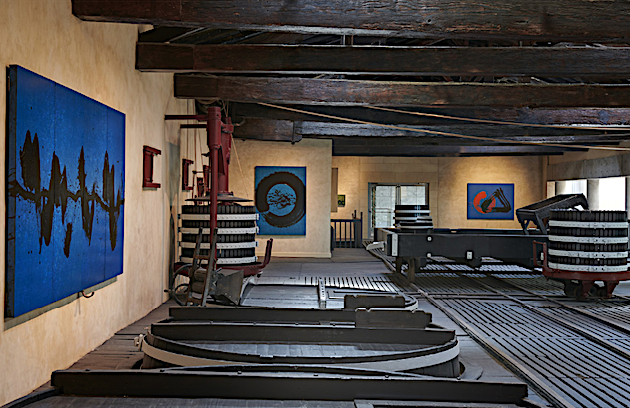News
Fabienne Verdier / The motion of matter - Exhibition at Château Lynch-Bages Until 31 October 2023

The paintings presented here for the first time are from Marielle Saradar’s collection, in collaboration with the Galerie Lelong & Co.
Fabienne Verdier employs a creative process that is rooted in the hybridisation of different forms of knowledge and becomes manifest in technical inventions (enormous brushes, special varnishes).
...